The Census Bureau released its quarterly report on home ownership and occupancy for Q4 2023. It stated that the rental housing vacancy rate was 6.6 percent, unchanged from its level in Q3 but up from a reported level of 5.8 percent in Q4 2022.
Parsing the vacancy data
The headline vacancy rate reported by Census is for all rental housing in the country, both single-family and multifamily. Census breaks down this figure in various ways, including by the number of units in the building. The chart, below, illustrates this comparison.
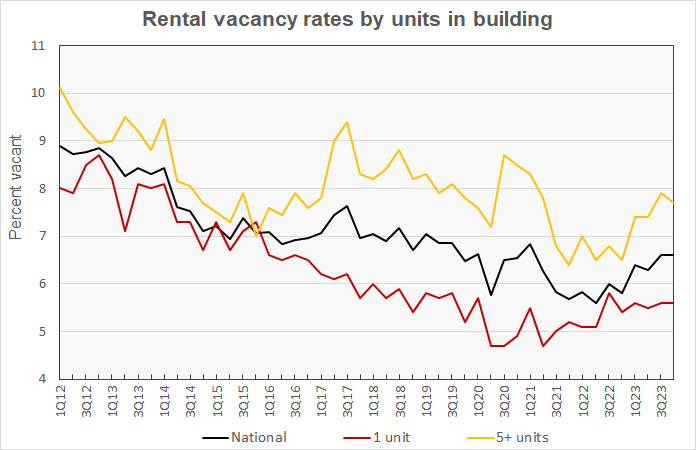
The chart shows that the vacancy rate for multifamily housing with 5 or more units per property as measured by the Census Bureau edged downward in Q4 to 7.7 percent. The single-family rental vacancy was unchanged, remaining at 5.6 percent.
Note that Apartment List reported that the multifamily rental vacancy rate at the end of December was 6.5 percent. By contrast, Yardi Matrix reported the multifamily rental vacancy rate in December as 5.2 percent. While the Census Bureau attempts to capture all rental housing in the country, other data sources may focus on subsets of the market like professionally managed properties and so they come up with different results.
The Census Bureau reported that the rental vacancy rate in the core cities of the Census Bureau’s Metropolitan Statistical Areas (MSAs) was 6.9 percent in Q4 2023, down from 7.3 reported for the previous quarter. The rental vacancy rate in the suburbs of the MSAs was 6.4 percent in Q3 2023, up 0.3 percentage points for the quarter. These trends are shown in the next chart, below.
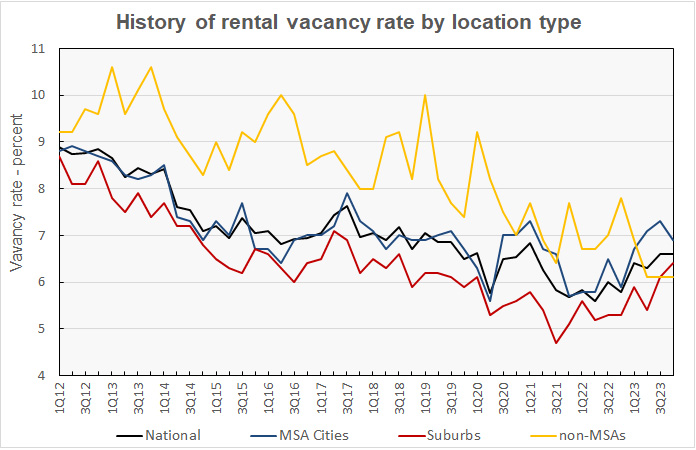
The rental vacancy rate history for each of the Census regions is shown in the next chart, below. Vacancy rates were reported higher in the South, lower in the West and Midwest and unchanged in the Northeast. By the numbers, the vacancy rates were reported to be 4.3 percent in the Northeast, 6.8 percent in the Midwest, 8.7 percent in the South and 5.1 percent in the West.
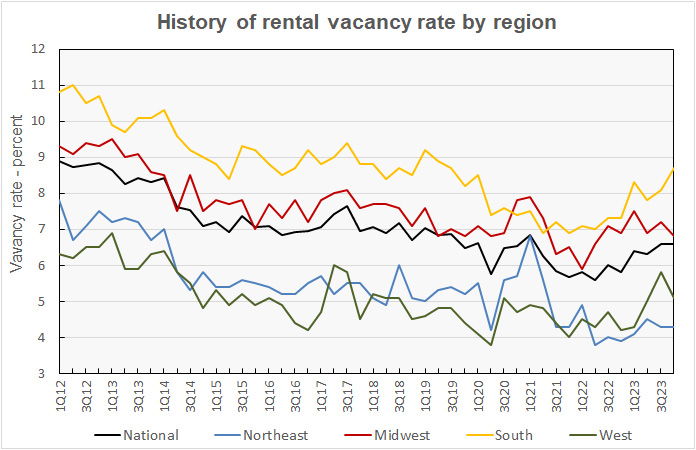
Census reported that 67.9 percent of vacant rental units were in structures with 2 or more units. Only about 15.3 percent of the vacant multifamily units had 3 or more bedrooms, with 1 bedroom units comprising 40.8 percent and 2 bedroom units comprising 41.5 percent of vacant stock. The median unit vacancy duration for multifamily properties in Q4 2023 was 2.3 months, down from 2.4 months one year earlier.
Rentership rate higher
The Census Bureau reported that 34.3 percent of the country’s 131,206,000 occupied housing units were inhabited by renter households in Q4 2023. This rate is up from that in Q3 as the growth in the number of renting households was nearly 3 times the growth in the number of homeowning households during the quarter.
The history of the number of occupied housing units and the share of renter households since 2012 is shown in the next chart, below. The chart shows that the reported number of renter households has been stuck in the range of 41 to 45 million since 2014, although the reading for Q4 2023 of 44,985,000 households set a new all-time high for the third quarter in a row.
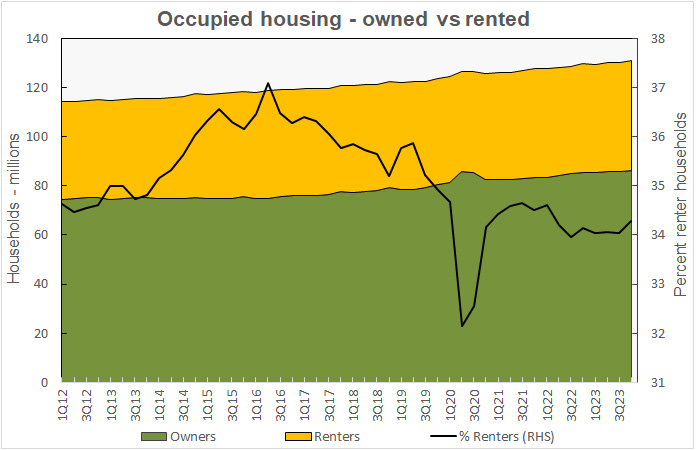
The number of homeowning households also set a record high this quarter, reaching 86,220,000.
The number of renter-occupied housing units were reported to rise by 613,000 in Q4. The number of owner-occupied housing units was reported to rise by 206,000.
Census see rising rents
The Census Bureau also tracks the median asking rents for the country as-a-whole. The history of their findings is shown in the next chart, below. Census reported that rents rose $3 per month in Q4 2023 to an all-time high. Census reported the national median rent to be $1,465 per month, a gain of 0.2 percent from the prior quarter and 10.8 percent from its level in Q4 2022.
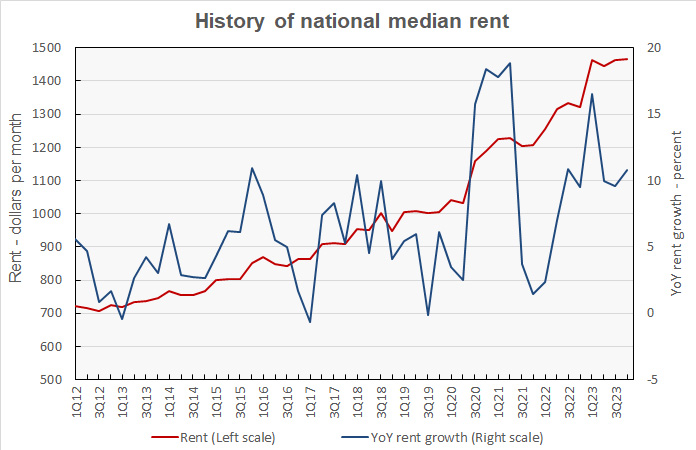
By contrast, Yardi Matrix reported that the national average apartment rent in December was $1,709 per month. Apartment List reported the national average apartment rent in December as $1,379 per month.
The last chart, below, shows the history of the median rent by Census region as a percentage of the national median rent. Rents rose 8.8 percent in the Northeast, and 1.8 percent in the West. Rents were reported 2.7 percent lower in the Midwest and 1.1 percent lower in the South.
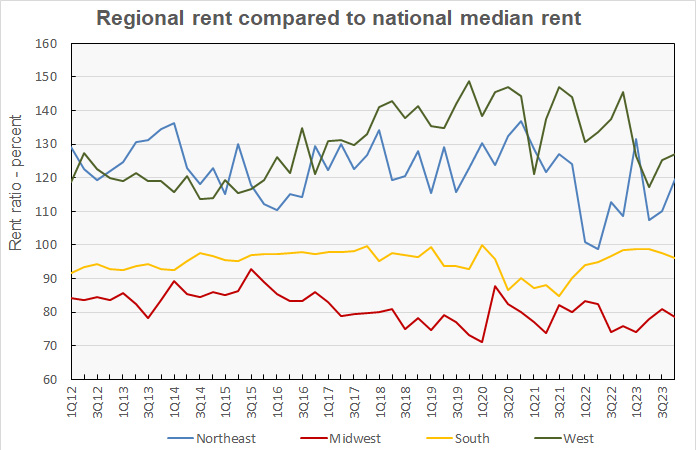
The Census report is called Quarterly Residential Vacancies and Homeownership, Fourth Quarter 2023. It is available here.













